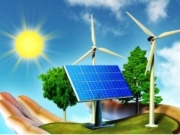“When previously, all electricity needed on the island was generated with a diesel generator, then electricity produced by the new solution is much more environmentally sustainable. We now produce at least 50% of electricity consumed on the island from renewable energy sources,” said Aavo Kärmas, the head of Enefit Green. When electricity was generated with diesel, approximately 500 tons of carbon dioxide per year was emitted to the atmosphere from the island, but from now on, the amount will decrease at least twice.
According to Kärmas, the goal of Enefit Green is to increase the production of renewable energy, and investments are mainly made in wind and solar energy in the Baltic Sea region. “We are prepared to consider establishing similar renewable energy solutions also to other small Estonian islands,” Kärmas added.
The capacity of the electricity production solution on Ruhnu is 160 kilowatts, which is enough to cover the electricity need of the entire island. The solar farm, battery and diesel generator are located near Ruhnu airfield, the electric wind generator is west from the airfield. Enefit Green invested approximately 500,000 euros in the development of the renewable energy solution.
The annual electricity consumption of Ruhnu island is approximately 450 megawatt-hours. The population of Ruhnu is 60 people, and during the summer vacations and tourism season the number can grow to 170 people. The area of the island is about 12 km2.
Enefit Green is a renewable energy company acting in the Baltic Sea region. Enefit Green is the subsidiary of international power company Eesti Energia.
.jpg)


